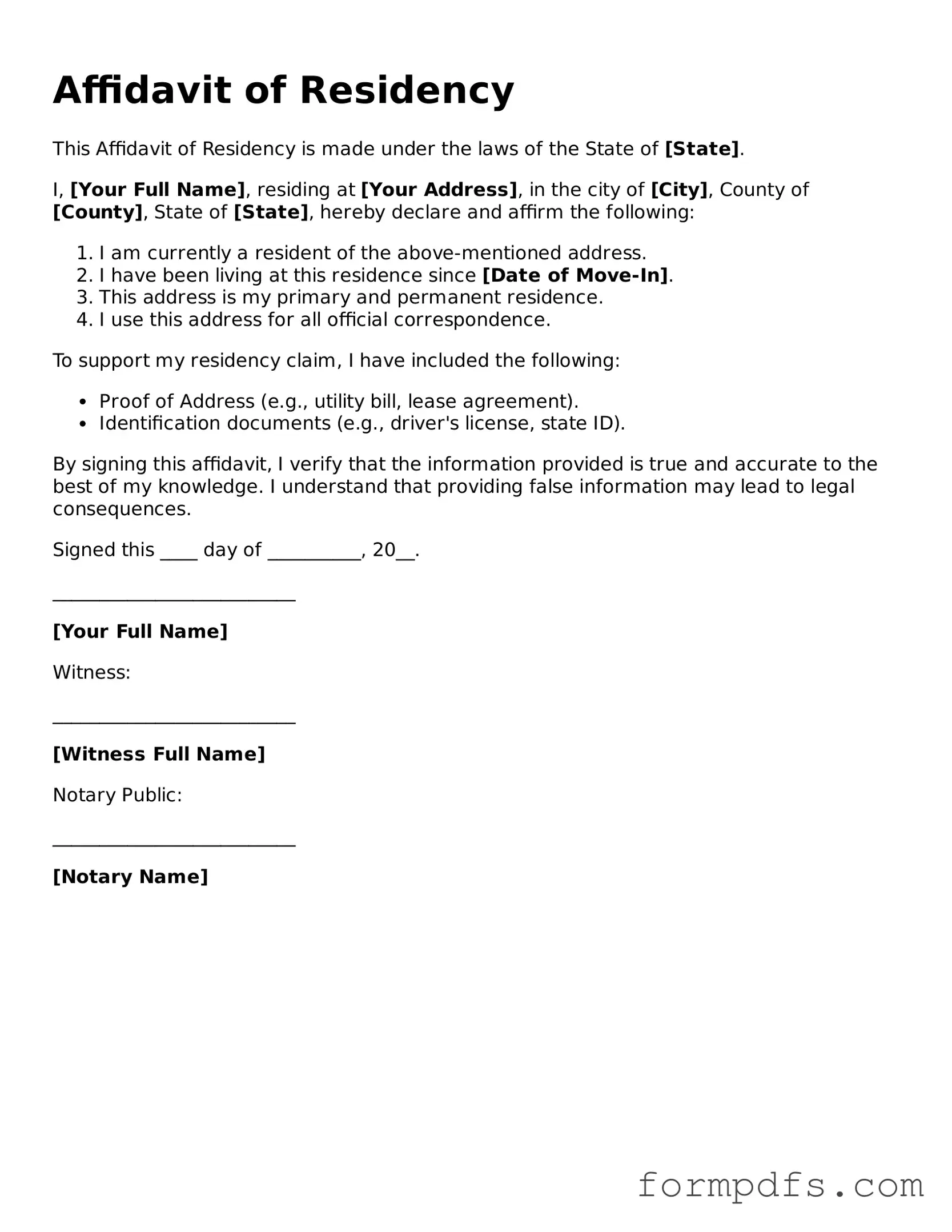The Affidavit of Residency form serves as a crucial document for individuals seeking to establish their residence for various purposes, such as enrolling in schools, obtaining government benefits, or verifying eligibility for certain programs. This form typically requires the individual to provide their current address and affirm their residency status, often under penalty of perjury. It may also ask for additional information, such as the length of time the individual has lived at the stated address and any supporting evidence, such as utility bills or lease agreements. By signing this affidavit, the individual asserts that the information provided is true and accurate, which can have significant legal implications. Understanding the importance of this document is essential, as it not only verifies residency but also plays a role in ensuring that individuals receive the services and benefits to which they are entitled. As you navigate the intricacies of residency verification, familiarity with the Affidavit of Residency form will empower you to make informed decisions and understand your rights and responsibilities.
